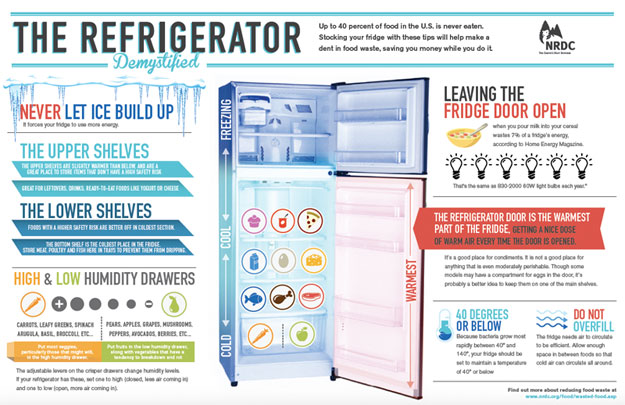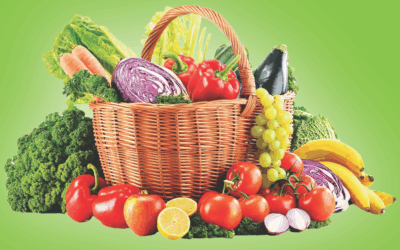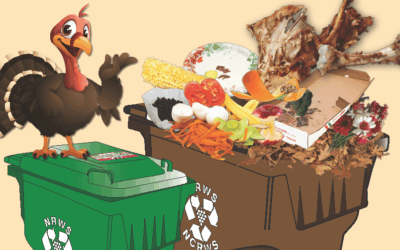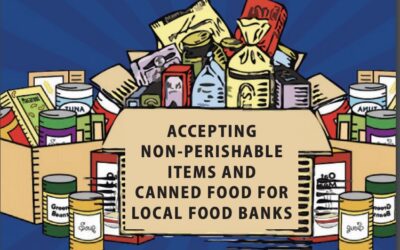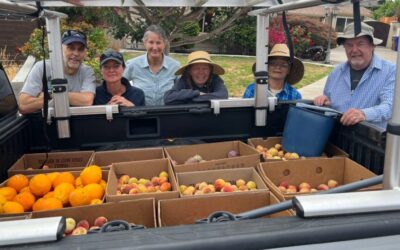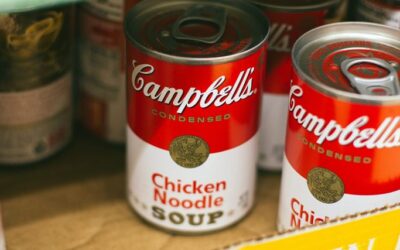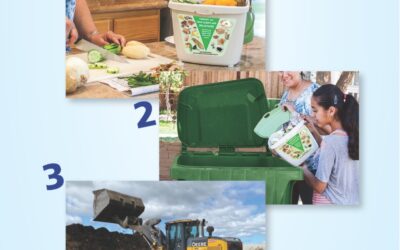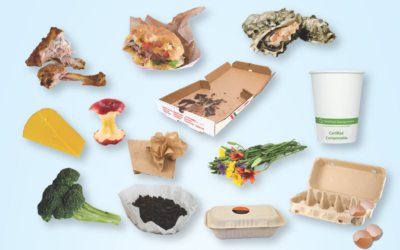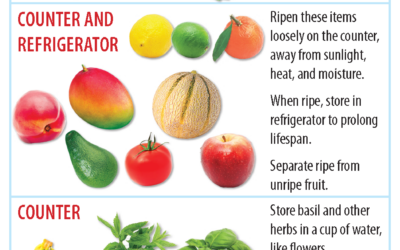FOOD WASTE
Can you guess what percentage of food in US goes to waste?
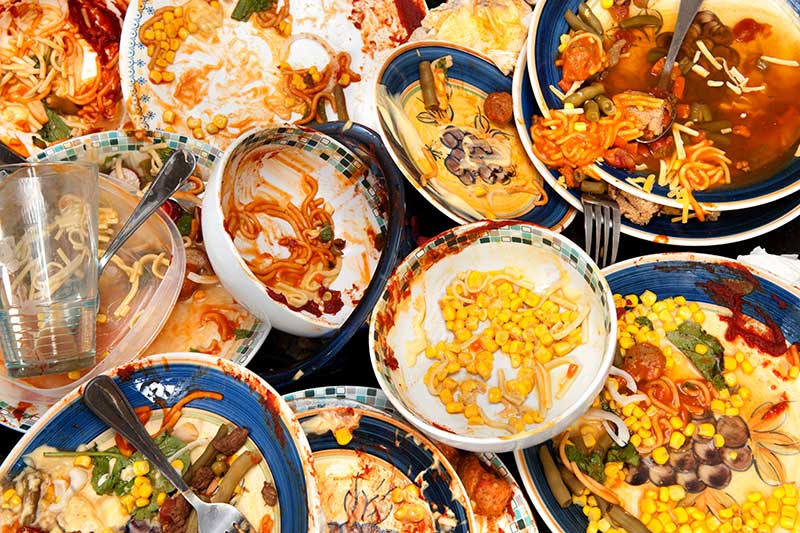
Did you know that 40 percent of the food produced in America isn’t eaten, and an estimated half of that waste comes from households? Take a quick mental inventory of the food you purchased on your last shopping trip. Did it all end up on your plate or in your belly? Chances are, probably not. Food waste is not intentional, but nevertheless a very common occurrence in households.
In the United States, it adds up to about 20 pounds per person, per month — that’s $1500 worth of food each year a family of four tosses. But food waste isn’t only a waste of money, it’s also a waste of natural resources, which puts unnecessary strain on the environment.
Put the Kibosh on Food Waste!
First figure out why it ends up in the trash. Here are the main reasons:
- Overbuying
- Overserving
- Forgetting leftovers
- Confusing the sell by/best by/use by dates
With those reasons in mind, try these tips to get smart and cut down:
- Shop smart. Only buy what you know you’ll use. Create a meal plan for the week and build a shopping list around that meal plan. Try using this meal planner from SaveTheFood.com, or the EPA’s smart shopping list (PDF).
- Store food strategically. Fasten a produce storage guide to your fridge door, such as this one from the EPA (PDF), so you know which foods keep best inside or outside the fridge. Also, learn about where food should be stored within your fridge. Your shelves, drawers and doors are different beasts and designed to hold different types of foods. Check out the NRDC’s Refrigerator Demystified infographic (PDF):
- Eat food strategically. All produce has a varying shelf life. Vegetarian Times provides a great explanation of why some veggies and fruit go bad before others, and offers a handy chart to help you plan your week. Try labeling your food to remind yourself which items need to be eaten first (such as with these handy signs from the EPA), and freeze food that’s about to go bad so you can use it in the future. Still having trouble eating food in time? Try the USDA’s FoodKeeper application for Apple and Android devices. It provides expert-backed advice for storing and eating more than 400 foods and drinks, and can give you reminders to use items before they go bad.
- Donate the food you can’t eat. Even prepared and perishable foods can be donated to local organizations that feed food-insecure people in our community. Learn more about where you can donate food in Napa.
- Prepare food in advance. When you get home from the store, rinse and chop your produce so that snacking and meal prep is easier during the week. That way you’ll be more likely to follow through on making the meals you shopped for.
- Don’t take sell-by or best-by dates as gospel. There are no standards for these dates, which are largely meaningless (read more in this Washington Post article). To learn more about how long you can keep food, visit StillTasty.com or this Real Simple guide.
- Have a fridge full of random items? Use an online tool to help you find recipes for them, such as Supercook or MyFridgeFood.
- Turn food scraps back into healthy soil by putting them in your compost cart! You can also create compost in your backyard. If you don’t have yard space, you could consider making in a worm bin.
- Have a garden? Get connected with Ample Harvest, an organization that connects food growers with food pantries, so that extra produce can feed those who need it.
- Get educated and motivated. Learn more in this video, or check out SaveTheFood.com or Sustainable America’s website I Value Food for more awareness-raising statistics and lifestyle tips.
Explore More – Read our Food Related Blogs
Feeding it Forward
Feeding it Forward works to reduce food waste and alleviate hunger through collaborative efforts. They rescue perishable food from donors and...
Compost Your Leaves, Pumpkins and Food Scraps!
Find out what you can do with your leaves and other green waste this fall!
Don’t Be a Turkey! Compost That Birdie!
Find out what materials you can toss in your brown compost cart this Thanksgiving!
Scouting For Food
Donate your food supplies to those in dire need! Date: November 15, 2025 Time: 9 am-12 pm Accepting non-perishable items and canned food for the...
Lettuce Not Waste!
31% of the U.S. food supply goes unsold, unused, or uneaten at home and at businesses. Here are some great tips and local solutions for food waste...
Canned Food Drive
Take Action on Hunger! Napa Recycling & Waste Services is sponsoring a CANNED FOOD DRIVE in association with the Napa Food Bank. Check...
Composting – Include the Food
There is more to compost than yard trimmings. Composting all your food scraps and soiled paper is now mandatory per state law SB 1383 - but it's as...
Scouting For Food
Donate your food supplies to those in dire need! Date: November 16, 2024 Time: 9 am-12 pm Napa Drop-Off Location: Trancas Park and Ride Parking Lot,...
Canned Food Drive-2024
Take Action on Hunger! Napa Recycling & Waste Services is sponsoring a CANNED FOOD DRIVE in association with the Napa Food Bank. Check...
Curbside Food Composting
BEAT THE “ICK” FACTOR! Reduce moisture and odors in your pail or cart by adding soiled or shredded paper, or by wrapping your food...
Fruit and Veggie Storage Guide
Storing your fresh produce correctly is one of the easiest and best ways to reduce wasted food. Download the Fruit & Veggie Storage Guide: Food...
Canned Food Drive 2023
September is Hunger Action Month! Napa Recycling & Waste Services is sponsoring a CANNED FOOD DRIVE in association with the Napa Food...
Compost Your Leaves, Pumpkins & Food Scraps!
Compost Your Leaves, Pumpkins & Food Scraps!
Compost Your Leaves, Pumpkins and Food Scraps!
NCRWS customers are provided up to four compost carts at no charge. NRWS customers are provided up to two compost carts at no charge. Additional...

